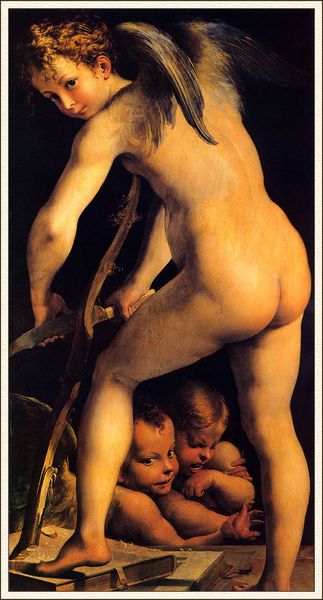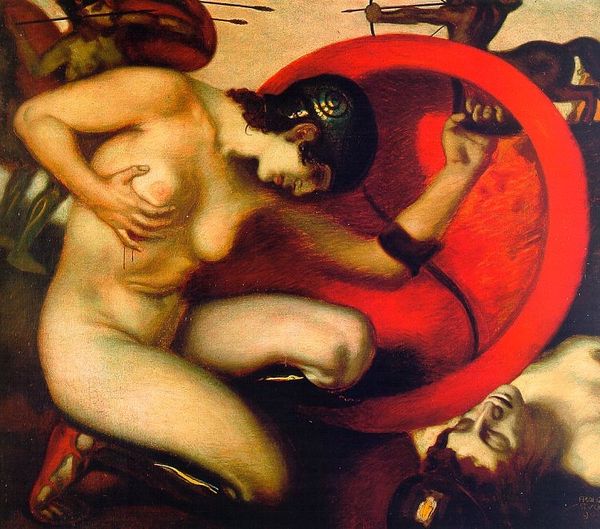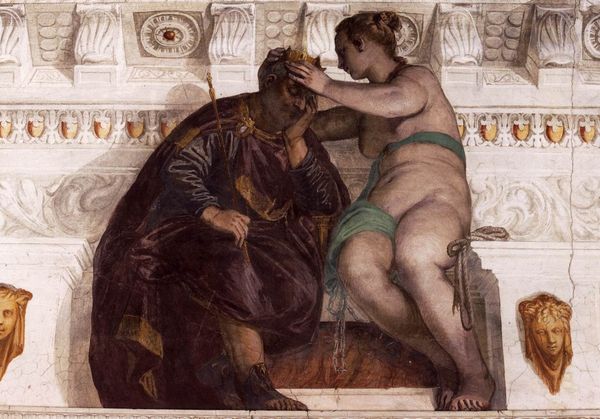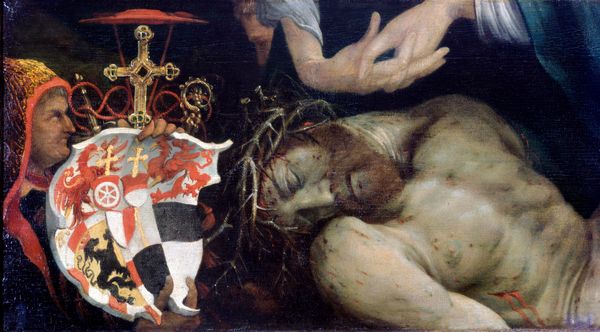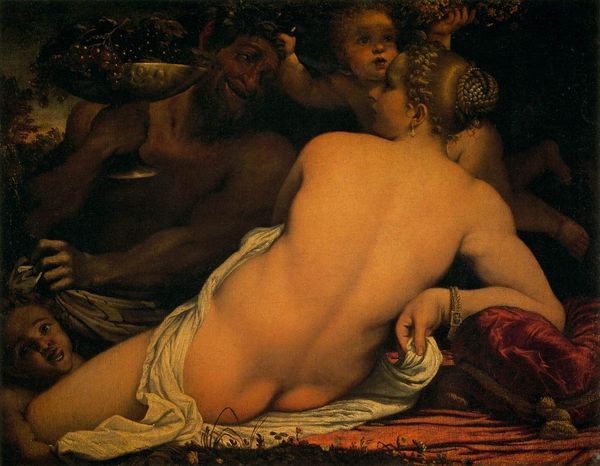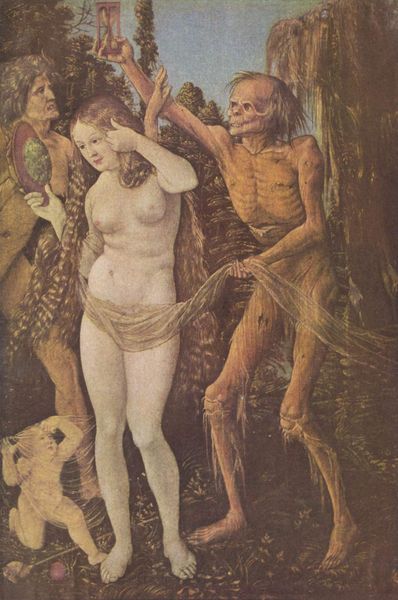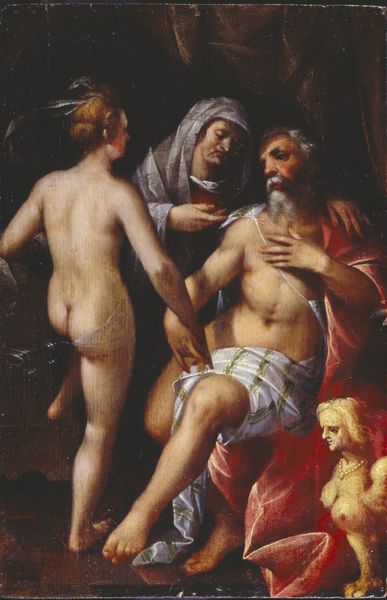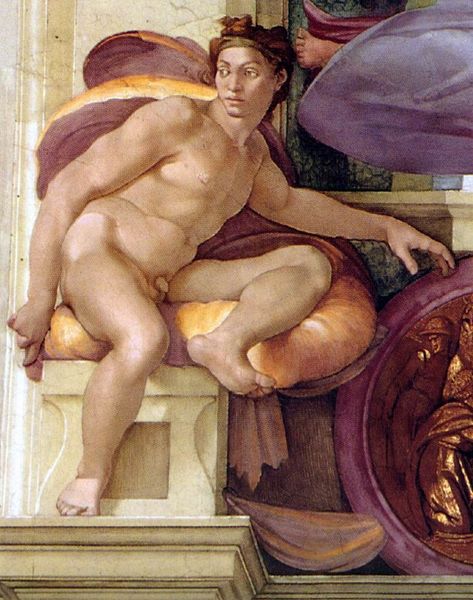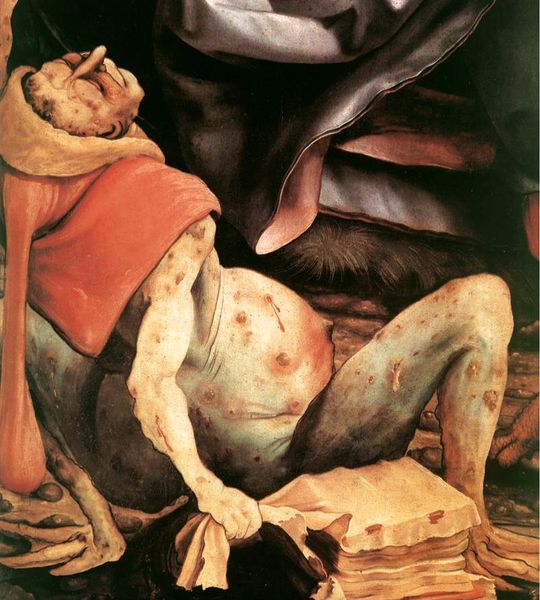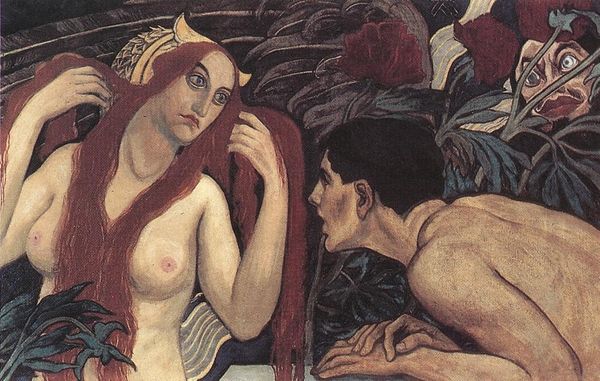
painting, oil-paint
#
allegory
#
painting
#
oil-paint
#
figuration
#
oil painting
#
mythology
#
genre-painting
#
nude
#
erotic-art
Copyright: Benjamin Canas,Fair Use
Curator: Benjamin Canas' "Bacanal," crafted in 1982 using oil paints, certainly grabs your attention. The figures sprawl in what feels like a fever dream. What are your first impressions? Editor: Well, the immediate impression is one of debauchery, as the title suggests. It’s heavy, not just thematically, but also in the thick application of paint. The tonal range is earthy. The piano keyboard feels forced and strangely tactile – how integral is it? Curator: It’s interesting that you pinpoint the materiality. Consider that the visible brushstrokes and somewhat coarse finish may intend to challenge our idea of "fine" art. Instead, Cañas might be focusing on how such seemingly chaotic and uncontrolled methods relate directly to notions of excess and indulgence associated with bacchanals. Editor: The central figure wearing a laurel, and hoisting that goblet seems a clear reference to Dionysus, doesn’t it? Also, notice the crescent moon—evoking mystery, subconscious drives and the general abandonment of restraint. Does the artist connect this symbolism with an analysis of artmaking in some way? Curator: Perhaps. Canas appears to use symbolic language linked to ecstatic rites alongside materials associated traditionally with "lower" art. It can then lead to questions about hierarchies: are the physical processes less important, or do they challenge conventional methods? And the figures are raw; there is a blatant sense of production. Editor: And production is important, no question. Take the colour palette—notice the limited use of colour. It appears the earthy browns and reds used have been carefully selected and employed, lending it this air of decadent consumption and its aftermath. It feels both classical and debased at the same time. Curator: A dichotomy reinforced, I think, by this crude yet powerful visual vocabulary alongside what seems to evoke art traditions of mythological scenes in painting. The question for me becomes how those decisions manifest in the viewing experience and impact on its historical reception as high or low. Editor: Indeed. Cañas asks us to examine the past through our own immediate, perhaps even primal, understanding of visual imagery, doesn't he? These symbols can evoke universal and timeless psychological conditions as it considers both material limits and possibilities. Thank you for these points! Curator: Absolutely, thinking through the lenses of process really gave a fresh point on how we ascribe value on objects or expressions that represent this collective memory of celebrations in life!
Comments
No comments
Be the first to comment and join the conversation on the ultimate creative platform.
